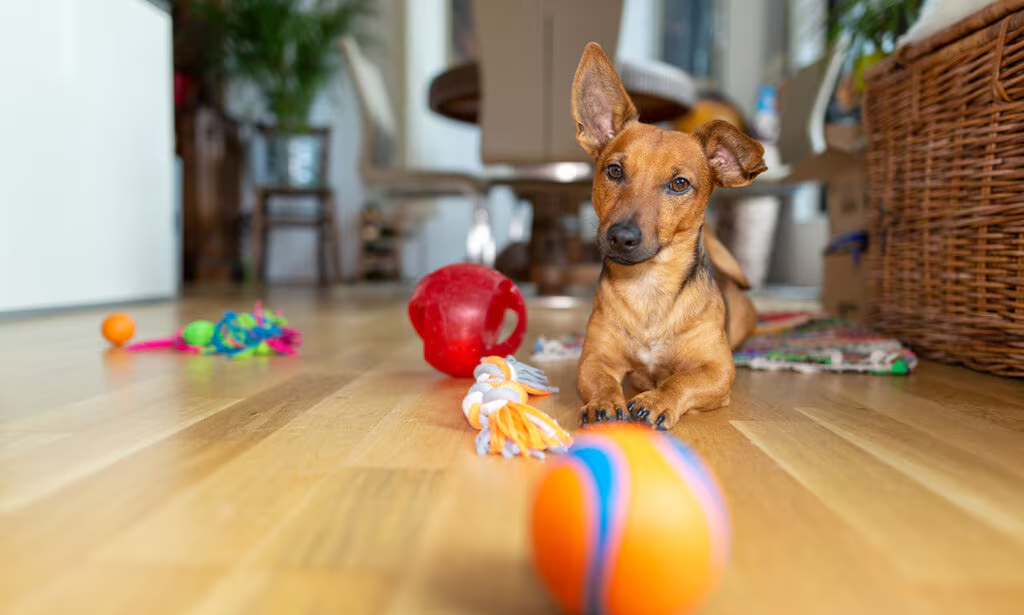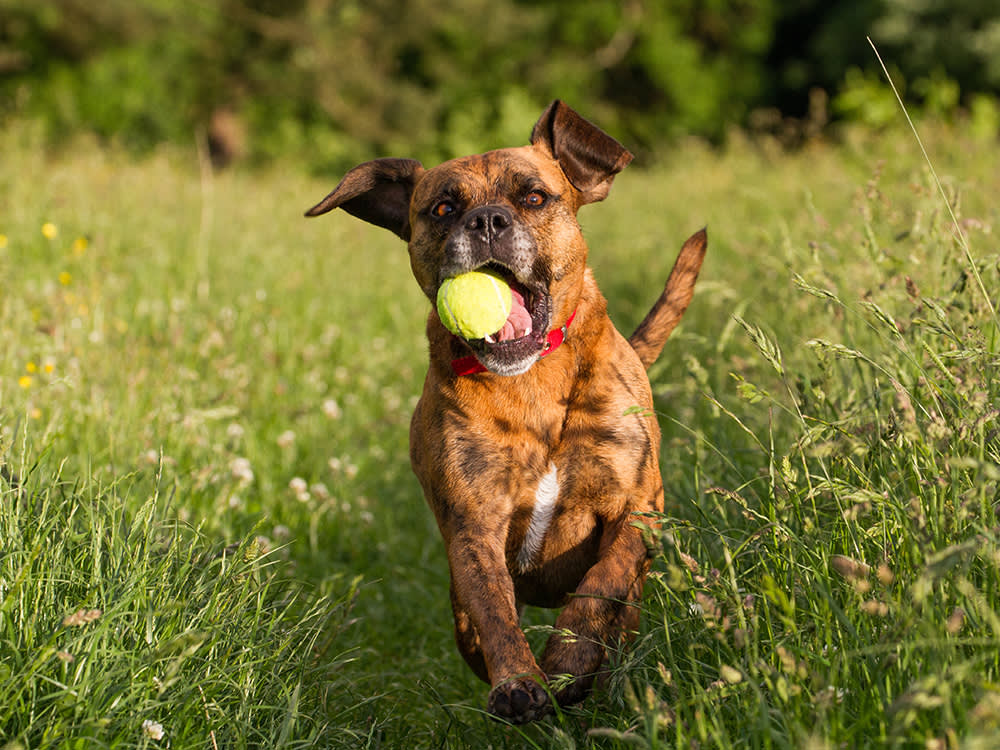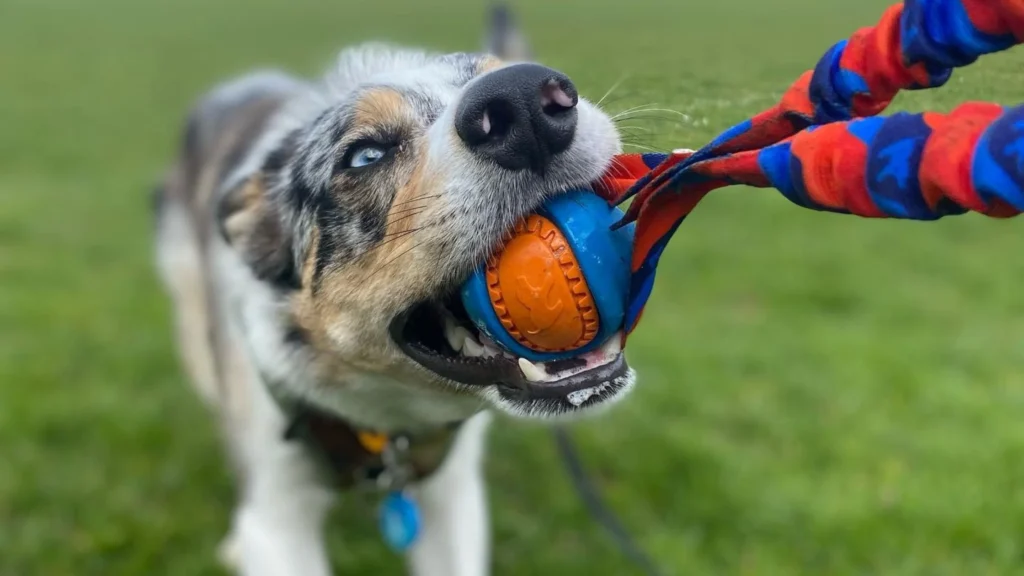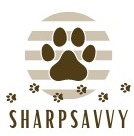Introduction to Teaching Your Dog to Fetch Specific Toys by Name
As a devoted dog owner, I’ve always been fascinated by the incredible intelligence and trainability of our canine companions. One of the most rewarding experiences is teaching your dog to fetch specific toys by name. This skill not only enhances the bond between you and your furry friend but also provides endless hours of fun and mental stimulation for your pup.
In this comprehensive guide, I’ll share my expertise and insights on mastering the art of teaching your dog to fetch specific toys by name. Whether you’re a first-time dog owner or an experienced trainer, this article will equip you with the knowledge and techniques to turn your dog into a toy-fetching superstar.
READ ALSO : Mastering Leash Reactivity: Empowering Your Dog Through Positive Reinforcement Training
Benefits of Training Your Dog to Fetch Specific Toys by Name

Teaching your dog to fetch specific toys by name offers a multitude of benefits, both for you and your canine companion. Here are some of the key advantages:
- Enhances Obedience and Responsiveness: When your dog learns to fetch a toy by its name, it demonstrates a high level of obedience and responsiveness to your commands. This lays the foundation for further training and strengthens the bond between you and your furry friend.
- Provides Mental Stimulation: The process of learning to associate toys with their names requires your dog to engage in cognitive processing, which helps to keep their mind active and engaged. This mental stimulation can prevent boredom and behavioral issues.
- Encourages Focused Attention: During the training process, your dog will learn to focus intently on the task at hand, which can translate to improved attentiveness in other areas of their life.
- Facilitates Playtime and Bonding: Fetching specific toys by name adds an element of excitement and interactivity to playtime, fostering a stronger bond between you and your dog.
- Practical Applications: The ability to fetch specific toys on command can be incredibly useful in various situations, such as retrieving a toy for a disabled person or finding a lost item.
Understanding the Basics of Dog Training
Before we dive into the step-by-step guide for teaching your dog to fetch specific toys by name, it’s essential to understand the fundamental principles of dog training. These principles will serve as the foundation for your success in this endeavor.
- Positive Reinforcement: Positive reinforcement is the cornerstone of effective dog training. By rewarding your dog’s desired behaviors with treats, praise, or play, you’ll encourage them to repeat those actions.
- Consistency and Patience: Consistency in your training approach and patience with your dog’s learning process are crucial for achieving long-lasting results.
- Incremental Progress: Dog training is a gradual process, and it’s important to break down the desired behavior into smaller, more manageable steps.
- Generalization: Once your dog has learned a specific behavior, it’s essential to generalize that learning across different environments, distractions, and contexts.
- Timing and Clarity: Proper timing of your rewards and clear communication of your expectations are essential for your dog to understand what you’re asking of them.
Preparing for Training Your Dog to Fetch Specific Toys by Name
Before you begin the training process, it’s important to ensure that you have the necessary tools and resources to set your dog up for success. Here’s what you’ll need to get started:
- Toy Selection: Choose a variety of toys that your dog enjoys playing with, such as plush toys, rubber balls, or interactive puzzle toys. Make sure the toys are durable and safe for your dog to play with.
- Treat Rewards: Gather a selection of high-value treats that your dog finds irresistible, such as small pieces of cooked chicken, cheese, or commercial training treats.
- Training Area: Designate a quiet, distraction-free area in your home or backyard where you can conduct the training sessions. This will help your dog focus on the task at hand.
- Clicker (Optional): A clicker can be a useful tool for marking the precise moment your dog performs the desired behavior, making it easier for them to understand what they’re being rewarded for.
- Patience and Dedication: Lastly, be prepared to invest time and patience into the training process. Teaching your dog to fetch specific toys by name requires consistent practice and positive reinforcement.
Step-by-Step Guide to Teaching Your Dog to Associate Toys with Their Names

Now that you’ve laid the groundwork, let’s dive into the step-by-step process of teaching your dog to fetch specific toys by name.
- Introduce the Toy and Its Name: Start by introducing your dog to one toy at a time. Hold the toy in front of your dog and clearly state the name of the toy, such as “ball” or “squeaky toy.” Repeat this process several times, rewarding your dog with a treat and praise each time they show interest in the toy.
- Teach the “Fetch” Command: Once your dog has learned to associate the toy with its name, introduce the “fetch” command. Place the toy a short distance away from your dog and say, “Fetch the [toy name].” Reward your dog with a treat and praise when they retrieve the toy.
- Increase the Distance: Gradually increase the distance between your dog and the toy, reinforcing the “fetch” command each time. This will help your dog understand that they need to move towards the toy to retrieve it.
- Add Distractions: As your dog becomes more proficient, start introducing mild distractions, such as other toys or family members, to ensure they remain focused on the specific toy you’ve asked them to fetch.
- Introduce Multiple Toys: Once your dog has mastered fetching a single toy, start incorporating additional toys into the training. Place several toys on the ground and ask your dog to fetch a specific one by name.
- Maintain Consistency: Throughout the training process, be sure to use the same name for each toy consistently. This will help your dog solidify the association between the toy and its name.
Training Tips and Techniques for Successful Toy Retrieval
To ensure your dog’s success in fetching specific toys by name, consider the following training tips and techniques:
- Positive Reinforcement: Always reward your dog’s correct behavior with enthusiastic praise, treats, or a favorite game. This will reinforce the desired behavior and encourage your dog to continue learning.
- Break It Down: If your dog is struggling with a particular step, break the task down into smaller, more manageable steps. This will help them build confidence and progress at their own pace.
- Incorporate Play: Make the training sessions fun and engaging by incorporating your dog’s favorite toys and games. This will help keep them motivated and engaged throughout the process.
- Vary the Rewards: While treats are an excellent reward, mix things up by also using praise, playtime, or a combination of both to keep your dog interested and engaged.
- Maintain a Positive Attitude: Your dog can sense your emotions, so it’s important to approach the training with a positive and patient attitude. This will create a calm and enjoyable learning environment for your furry friend.
Troubleshooting Common Challenges During the Training Process
As with any training endeavor, you may encounter some challenges along the way. Here are a few common issues and how to address them:
- Lack of Focus: If your dog seems distracted or uninterested during the training sessions, try shortening the sessions, introducing higher-value treats, or changing the training environment to a more stimulating one.
- Difficulty Associating Toys with Names: If your dog is struggling to associate a specific toy with its name, try using more distinctive toys or slowing down the pace of the training.
- Inconsistent Retrieval: If your dog is inconsistent in their ability to retrieve the correct toy, revisit the earlier steps and reinforce the basics before moving forward.
- Frustration or Anxiety: If your dog becomes frustrated or anxious during the training, take a break and try again later. Avoid pushing them too hard, as this can hinder their learning.
- Generalization Difficulties: If your dog struggles to retrieve the correct toy in different environments or with distractions, focus on gradually increasing the level of difficulty and reinforcing the behavior in various settings.
Remember, every dog learns at their own pace, and it’s important to be patient and adaptable throughout the training process.
Reinforcing and Maintaining the Learned Behavior

Once your dog has mastered the art of fetching specific toys by name, it’s essential to reinforce and maintain the learned behavior. Here are some strategies to help you do so:
- Regular Practice: Incorporate regular practice sessions into your daily routine to ensure your dog’s skills remain sharp. This can be as simple as a few minutes of toy fetch during your regular playtime.
- Vary the Challenges: Introduce new elements, such as different environments, distractions, or the introduction of additional toys, to keep your dog engaged and challenged.
- Praise and Reward: Continue to provide enthusiastic praise and high-value rewards when your dog successfully fetches the correct toy. This will help reinforce the desired behavior.
- Incorporate the Behavior into Daily Life: Look for opportunities to incorporate the toy-fetching behavior into your daily activities, such as asking your dog to fetch a specific toy before a meal or when it’s time for a walk.
- Celebrate Successes: Recognize and celebrate your dog’s achievements, no matter how small. This will help build their confidence and encourage them to continue learning.
Taking the Training to the Next Level: Advanced Techniques for Toy Retrieval
Once your dog has mastered the basic toy-fetching skills, you can explore more advanced techniques to challenge them and further strengthen the bond between you.
- Scent-Based Retrieval: Introduce scented toys or hide a toy with a specific scent and ask your dog to find it. This engages their natural hunting and tracking instincts.
- Retrieve by Description: Instead of using the toy’s name, ask your dog to fetch a toy based on its color, size, or other distinguishing features.
- Obstacle Course Retrieval: Set up a simple obstacle course and challenge your dog to navigate it to retrieve the correct toy.
- Toy Discrimination: Present your dog with a selection of toys and ask them to retrieve a specific one, testing their ability to differentiate between the toys.
- Competitive Toy Retrieval: If you’re feeling adventurous, you can even explore competitive dog sports, such as Nose Work or Barn Hunt, where your dog’s toy-fetching skills can be put to the test.
Remember, the key to success in these advanced techniques is to build a strong foundation of basic toy-fetching skills and to continue reinforcing your dog’s learning with positive rewards and encouragement.
Conclusion: Celebrating the Success of Teaching Your Dog to Fetch Specific Toys by Name
Teaching your dog to fetch specific toys by name is a rewarding and enriching experience that can bring endless joy to both you and your furry companion. By following the principles and techniques outlined in this guide, you’ll be well on your way to transforming your dog into a toy-fetching superstar.Ready to take your dog’s toy-fetching skills to the next level? Sign up for our exclusive training program and unlock the secrets to mastering this incredible feat. Click here to get started!


